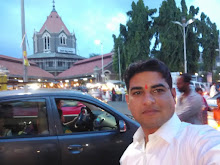India is a land of art and crafts. Using locally available goods and guided by a beautiful vision they make wonderful artifacts. Most of Indian garments carry a kind of embroidery or the other in order to be more beautiful and attractive. Embroidery in general terms, is a kind of work of fine threads on the surface of a fabric in an artistic pattern. Different regions of India have different embroidery traditions on the basis of fabric, thread, design and the color combinations applied. Due to their distinct style, intricate craftwork, complex process and over all their elegance, Indian Embroidery styles are popular world over. Some of very famous Indian Embroidery styles are discussed in different heads below:
Chikankari: This is one of the most sought after embroidery work of India. Chikankari is most delicately done embroidery on muslin, georgette, chiffon and other fine fabrics with white yarn. Different kind of stitches like flat stitches, embossed stitches and small stitches make the fabric very beautiful. A fabric that is to be embellished with chikankari undergoes through five different processes viz. stitching, printing, embroidery, washing, and finishing. Creeper motif is the most commonly used motif in chikankari, whereas flower motifs like jasmine, rose, flowering stems, lotus and paisley motifs are also very popular. Chikankari embroidery is not limited to only garments but it is done on various home furnishing items also like cushion covers, pillow covers, table linen and partition curtains. Lucknow in Uttar Pradesh is the biggest center of Chikankari.
Kantha: This is local embroidery style of Bengal practiced by Bengali women to make it over home furnishing items. Old cotton saris are used as base and the thread used is also old. This is marked by small running stitches that give a series of dotted lines. The outer surface of the old cotton sari undergoes through a lot of needlework and it changes the appearance of the old sari to new and fresh one. The usual motifs made in kantha are gods and goddesses, animals, flowers and different geometric patterns. There are various kind of kantha on the base of their use and the process of manufacturing. Some important ones are Archilata kantha, Baiton kantha, Durjani/thalia, Oaar kantha, Sujani kantha and Rumal kantha.
Kathi : This style of embroidery is done by the Rabari nomadic tribe of Gujarat. This style is marked by the combination of chain stitch along with appliqué work and the embellishments of small mirrors. Bright colors fabrics are used for this embroidery and the folk flavor of Gujarat looks on with full vibrancy.
Zardozi: This style of embroidery flourished in the medieval period under the patronage of emperor Akbar. You will find the creative use of laid stitch with the golden thread in zardozi. This embroidery is very intricate, and complex but beautiful and elegant. Zardozi could be done on saris, wall hangings, caps and other articles. For zardozi, golden wires or zari is used which is made after strenuous efforts that involve winding, twisting, wire drawing and gold plating of thread. Suart and Banaras are the principal centers of zardozi presently. Zardozi done garments are very popular and high in demand these days.
Beside these embroidery styles of India, there are some other very important styles practiced in India. Some of them are appliqué, crewelwork, phulkari, karchobi. aribharat, kimkhab,sujuni, etc.
To have more idea and information on Indian embroidery styles please visit http://india-crafts.com/textile/embroidery_traditions/
Wednesday, November 7, 2007
Subscribe to:
Post Comments (Atom)



No comments:
Post a Comment